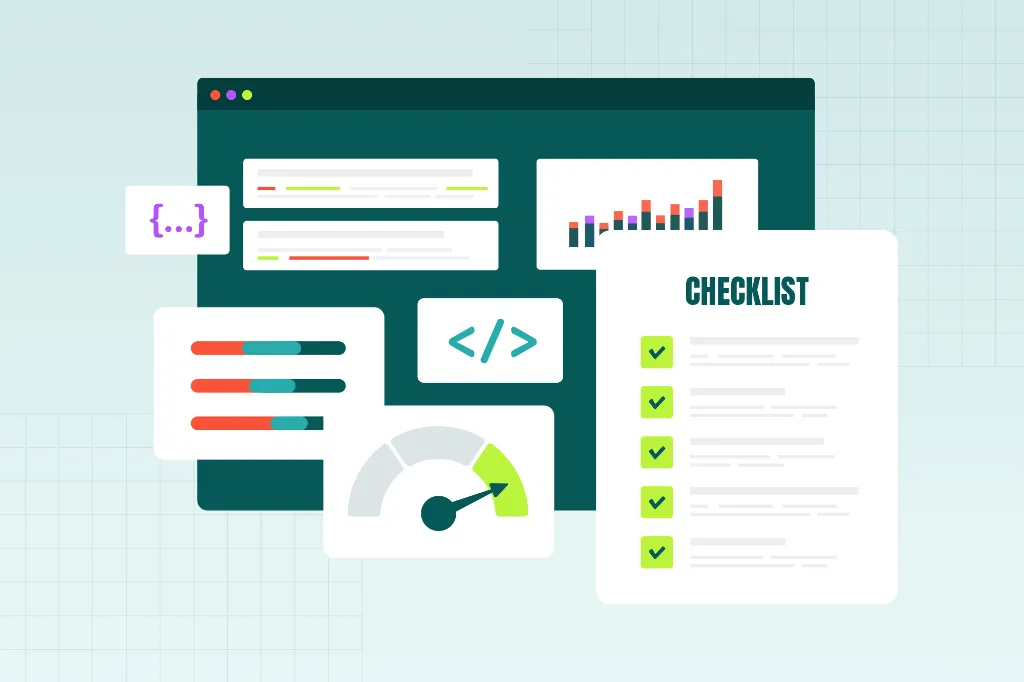Did you know that 88% of online consumers are less likely to return to a site after a bad experience? Users form an opinion about your website in just 50 milliseconds—and that snap judgment directly impacts your bottom line.
In today’s digital landscape, your website isn’t just an online brochure; it’s a revenue engine. Web design encompasses the visual elements (layout, colors, typography) while user experience (UX) focuses on how people interact with and feel about your site. Together, they shape user behavior, drive conversions, and generate measurable business results.
This guide explores how design and UX work together to turn visitors into customers and browsers into buyers.
The Fundamentals: Understanding Web Design and UX
Web Design: Your Digital First Impression
Web design is your brand’s first impression for potential customers. Every visual element tells a story about who you are and what you offer. A thoughtful layout creates a visual hierarchy, guiding visitors naturally from one section to the next. Well-chosen color schemes don’t just look appealing—they trigger psychological responses that can influence purchasing decisions. Consistent typography builds brand recognition and readability, while high-quality imagery reinforces your professionalism and credibility.
Today’s responsive design goes beyond being mobile-friendly. It’s about creating a cohesive experience across every touchpoint. Whether someone discovers you on a smartphone during their commute or researches you on their desktop computer at the office, the experience should feel intentionally crafted for their context.
UX: The Invisible Force That Drives Action
While design catches the eye, UX captures conversions. It’s the invisible architecture that makes complex tasks feel effortless. Intuitive navigation means visitors never have to guess where to find information. Clear, logical menus reduce cognitive load and prevent frustration. Lightning-fast load times respect users’ time and patience. Accessibility features ensure everyone can engage with your content, regardless of their abilities.
But UX goes deeper than functionality; it’s about emotional resonance. Does your site feel welcoming or intimidating? Does the checkout process feel secure or sketchy? These emotional touchpoints directly influence whether visitors become customers.
Think of it this way: web design is the welcoming storefront that draws people in, while UX is the knowledgeable sales associate who guides them smoothly to a purchase they feel great about.
The Psychology Behind User Behavior
First Impressions Matter—A Lot
Professional, modern design signals trustworthiness, competence, and attention to detail. Conversely, outdated visuals, broken layouts, or confusing navigation immediately trigger doubt. In the user’s mind, if you can’t maintain a quality website, how can they trust you with their business?
The Power of Cognitive Load
Every element on your page demands mental energy from visitors. Cognitive load theory explains why cluttered, complex interfaces drive people away—they’re simply too exhausting to process. Clean, purposeful design reduces this mental burden, making it easier for users to focus on what matters: taking action.
Strategic white space, clear visual hierarchy, and logical content organization all contribute to a more pleasant, less taxing user experience. When people can navigate effortlessly, they’re more likely to engage deeply with your content and complete desired actions.
Emotional Design and Trust Building
Colors evoke emotions, shapes suggest personalities, and interactions create feelings. Blue often conveys trust and stability—why do you think so many financial institutions use it? Red creates urgency, which is why it’s popular for sales and clearance messaging. Green suggests growth and harmony, making it ideal for health and environmental brands.
Beyond color psychology, micro-interactions—those small animations when you hover over a button or the satisfying confirmation when you complete a form—create positive emotional associations with your brand. These details might seem minor, but they accumulate into an overall feeling of quality and care.
How Web Design and UX Influence User Behavior
Engagement Metrics That Matter
A well-designed, user-friendly site actively encourages beneficial behaviors. Visitors stay longer, exploring multiple pages and engaging more deeply with your content. These positive behaviors show up clearly in your analytics through metrics like:
- Lower bounce rates: When people find what they’re looking for quickly, they stick around
- Longer session durations: Intuitive navigation encourages exploration
- Higher pages per session: Clear internal linking and compelling content keep users engaged
- Improved time on page: Quality UX makes content consumption enjoyable rather than frustrating

The Trust Factor
Professional design establishes credibility at first glance, but UX maintains and builds that trust throughout the user journey. Fast load times signal reliability. Clear privacy policies and secure checkout processes demonstrate trustworthiness. Easy-to-find contact information and customer service options reduce purchase anxiety.
On the flip side, a single broken link, outdated copyright date, or confusing form can instantly erode the confidence you’ve worked so hard to build. Consistency across all touchpoints reinforces the perception that you’re a reliable, professional organization worth doing business with.
Behavioral Nudges and Conversion Psychology
Strategic UX leverages principles from behavioral psychology to guide users toward desired actions. Well-placed calls-to-action (CTAs) use contrasting colors and action-oriented language to stand out without being pushy. Social proof elements—testimonials, reviews, client logos—tap into our natural tendency to follow what others are doing.
Personalization takes this further by tailoring the experience to individual preferences and behaviors. When a returning visitor sees products similar to their previous purchases or content related to their interests, they’re more likely to engage because the experience feels relevant and valuable.
Direct Links to Revenue Generation
Conversion Rate Optimization: The Bottom-Line Impact
Here’s where excellent design and UX translate directly into dollars and cents:
Streamlined Conversion Funnels: Every unnecessary click, confusing form field, or unclear instruction costs you customers. Optimizing the path from interest to purchase can dramatically improve conversion rates. Companies often see 20-50% increases in conversions simply by simplifying their checkout process.
Reduced Cart Abandonment: With average cart abandonment rates hovering around 70%, even small improvements to the checkout experience yield significant results. Clear pricing, multiple payment options, guest checkout capabilities, and trust signals during the payment process all contribute to higher completion rates.
Form Optimization: Whether you’re generating leads or processing orders, forms are critical conversion points. Best practices include minimizing required fields, using smart defaults, providing real-time validation, and clearly explaining why you need specific information.
SEO Synergy: Design That Search Engines Love
Google’s algorithm increasingly prioritizes user experience signals, creating a powerful synergy between UX and SEO:
Core Web Vitals: Google now includes page speed, interactivity, and visual stability as ranking factors. Sites that provide better user experiences literally rank higher in search results, driving more organic traffic.
Mobile-First Indexing: Since Google primarily uses the mobile version of sites for indexing and ranking, responsive design isn’t just nice to have—it’s essential for search visibility.
Dwell Time and Bounce Rate: When users spend more time on your site and navigate to multiple pages, it signals to search engines that your content is valuable and relevant, potentially boosting your rankings.
Accessibility Benefits: Many accessibility improvements—like proper heading structure, descriptive alt text, and logical page organization—also improve SEO by making content more understandable to search engine crawlers.
Customer Lifetime Value and Retention
Great UX doesn’t just convert first-time visitors—it creates loyal customers who return again and again:
Repeat Purchase Behavior: When customers have positive experiences, they’re significantly more likely to return. E-commerce sites with superior UX see 15-20% higher customer lifetime values compared to their competitors.
Referral Generation: Satisfied customers become brand advocates, recommending your business to friends, family, and colleagues. Word-of-mouth marketing driven by exceptional user experiences is both free and highly effective.
Reduced Support Costs: Intuitive design and clear information architecture reduce the number of customer service inquiries, saving money while improving customer satisfaction.
Performance Metrics That Drive Revenue
The connection between technical performance and revenue is clear and measurable:
Load Speed Impact: Amazon found that every 100ms increase in page load time decreased sales by 1%. For a company generating millions in daily revenue, that’s substantial money left on the table.
Mobile Performance: With mobile commerce accounting for increasingly larger portions of online sales, mobile optimization directly impacts revenue potential. Sites that load quickly and function smoothly on mobile devices capture more of this growing market.
Conversion Rate Improvements: Even modest improvements in conversion rates compound significantly over time. If you typically convert 2% of visitors and improve that to 2.5%, you’ve increased revenue by 25% without spending more on marketing.
Best Practices for Implementing Revenue-Driving Design and UX
Research-Driven Decision Making
User Analytics Deep Dive: Google Analytics, heat mapping tools like Hotjar, and user session recordings provide invaluable insights into how people use your site. Look for patterns in drop-off points, popular content paths, and common user frustrations.
Customer Feedback Integration: Regular surveys, user interviews, and feedback forms help you understand the “why” behind user behaviors. Sometimes the biggest UX improvements come from simply asking customers what’s frustrating them.
Competitive Analysis: Study your competitors’ sites. Not to copy them, but to understand industry standards and identify opportunities for differentiation. What are they doing well? Where are they falling short? How can you provide a superior experience?

Design Excellence Standards
Mobile-First Approach: Start your design process with mobile devices and expand to desktop. This ensures your core experience works flawlessly on the devices most people use to browse the web.
Performance Optimization: Aim for load times under three seconds on mobile and under two seconds on desktop. Optimize images, minimize code, leverage browser caching, and consider a content delivery network (CDN) for faster global performance.
Brand Consistency: Every page should feel cohesively branded through consistent color usage, typography choices, imagery style, and tone of voice. This consistency builds trust and professional credibility.
Visual Hierarchy: Guide users’ attention through strategic use of size, color, contrast, and white space. The most important elements should be the most visually prominent.
UX Optimization Essentials
Navigation Simplification: Your main navigation should include no more than 7-9 items. Use clear, descriptive labels rather than creative or clever terms that might confuse visitors.
Call-to-Action Strategy: Every page should have a clear primary action you want visitors to take. Secondary actions are fine, but make sure the main CTA stands out through color, size, and placement.
Accessibility Implementation: Beyond being the right thing to do, accessibility improvements often benefit all users. Alt text for images, proper heading structure, keyboard navigation, and sufficient color contrast make your site more usable for everyone.
A/B Testing Culture: Continuously test different versions of key pages, forms, and CTAs. Small improvements compound over time into significant revenue increases.
Technology and Tool Recommendations
Content Management Systems: WordPress, Shopify, and Webflow offer excellent foundations for user-friendly sites, with themes and plugins designed specifically for conversion optimization.
Analytics and Testing Tools: Google Analytics 4, Hotjar for user behavior insights, Google Optimize for A/B testing, and PageSpeed Insights for performance monitoring provide comprehensive optimization data.
Design and Prototyping: Tools like Figma and Adobe XD allow you to create and test designs before development, saving time and ensuring better user experiences.
Personalization Platforms: AI-driven tools like Dynamic Yield and Optimizely enable sophisticated personalization that can significantly improve conversion rates by tailoring experiences to individual user preferences.

Advanced Strategies for Maximizing Revenue Impact
Personalization and Dynamic Content
Modern users expect experiences tailored to their interests, behaviors, and needs. Personalization can increase conversion rates by 10-30% by making every interaction more relevant and valuable.
Behavioral Personalization: Show different content based on how users found your site, which pages they’ve visited, or actions they’ve taken previously.
Geographic Customization: Display location-specific information, local testimonials, or region-appropriate pricing and offers.
Purchase History Integration: For returning customers, highlight-related products, reorder options, or exclusive loyalty benefits.
Conversion Funnel Optimization
Map out every step of your customer journey and optimize each touchpoint:
Awareness Stage: Ensure your site loads quickly and makes a strong first impression when people discover you through search or social media.
Consideration Stage: Provide detailed information, social proof, and comparison tools to help prospects evaluate your offerings.
Decision Stage: Remove friction from the conversion process with simplified forms, multiple payment options, and clear value propositions.
Retention Stage: Create post-purchase experiences that encourage repeat business and referrals.
Multi-Device Experience Optimization
Today’s customers research on mobile, compare on tablet, and often purchase on desktop (or vice versa). Ensure consistency across all devices:
Cross-Device Functionality: Features and content should work seamlessly regardless of screen size or device type.
Progressive Web App Features: Consider implementing PWA capabilities for mobile users, providing app-like experiences without requiring downloads.
Voice Search Optimization: As smart speakers and voice assistants become more common, optimize for natural language queries and featured snippets.
Measuring Success: Key Metrics and KPIs
Revenue-Focused Metrics
Conversion Rate: The percentage of visitors who complete desired actions (purchases, signups, downloads).
Average Order Value (AOV): Track how design changes influence the amount customers spend per transaction.
Customer Lifetime Value (CLV): Measure the long-term revenue impact of improved user experiences.
Revenue Per Visitor (RPV): This metric combines traffic and conversion data to show overall site effectiveness.

User Experience Indicators
Bounce Rate: High bounce rates often indicate poor user experience or mismatched visitor expectations.
Page Views Per Session: More page views typically suggest good navigation and engaging content.
Time on Site: Longer sessions usually indicate satisfied users who find your content valuable.
Task Completion Rate: For specific user flows (like checkout or form submission), measure how many users successfully complete the process.
Technical Performance Metrics
Core Web Vitals: Google’s specific metrics for page loading speed, interactivity, and visual stability.
Mobile Performance Scores: Tools like Google PageSpeed Insights provide specific mobile optimization recommendations.
Error Rates: Track 404 errors, broken forms, and technical issues that might frustrate users and hurt conversions.
Potential Pitfalls and How to Avoid Them
Common Design and UX Mistakes
- Information Overload: Trying to communicate everything at once overwhelms visitors. Focus on what’s most important for each specific page and user goal.
- Neglecting Mobile Users: With mobile traffic often exceeding 60% of total visitors, mobile-first design isn’t optional—it’s critical for business success.
- Inconsistent Branding: Mixed messages, varying color schemes, or inconsistent tone confuse users and undermine trust.
- Ignoring Load Speed: Even beautiful designs fail if they take too long to load. Performance optimization should be a top priority throughout the design process.
- Over-Designing: Sometimes less truly is more. Clean, simple designs often convert better than complex, feature-heavy alternatives.

Avoiding the Pitfalls
- Regular Performance Audits: Monthly reviews of site speed, mobile functionality, and user flow completion rates help identify issues before they significantly impact revenue.
- Continuous User Testing: Regular feedback from real users reveals problems that analytics alone might miss.
- Agile Design Philosophy: Treat your website as a living system that evolves based on data, feedback, and changing user needs rather than a static monument to your brand.
- Budget for Maintenance: Factor ongoing optimization, updates, and improvements into your web development budget. The most successful sites are continuously refined and improved.
Conclusion: Your Website as a Revenue Growth Engine
Your website is more than a digital storefront—it’s a 24/7 revenue engine. When thoughtful design meets seamless user experience, every marketing dollar works harder, driving measurable gains in conversions, customer satisfaction, and long-term growth. Businesses that invest in UX consistently outperform, with proven results ranging from increased bookings to dramatic lead generation.
At Straight North, we specialize in unlocking that potential. Whether it’s a full redesign or refining key conversion paths, strategic UX and design improvements can turn casual visitors into loyal customers. Ready to elevate your site’s performance? Contact Straight North to talk with experts who can help bring your business to the next level.








